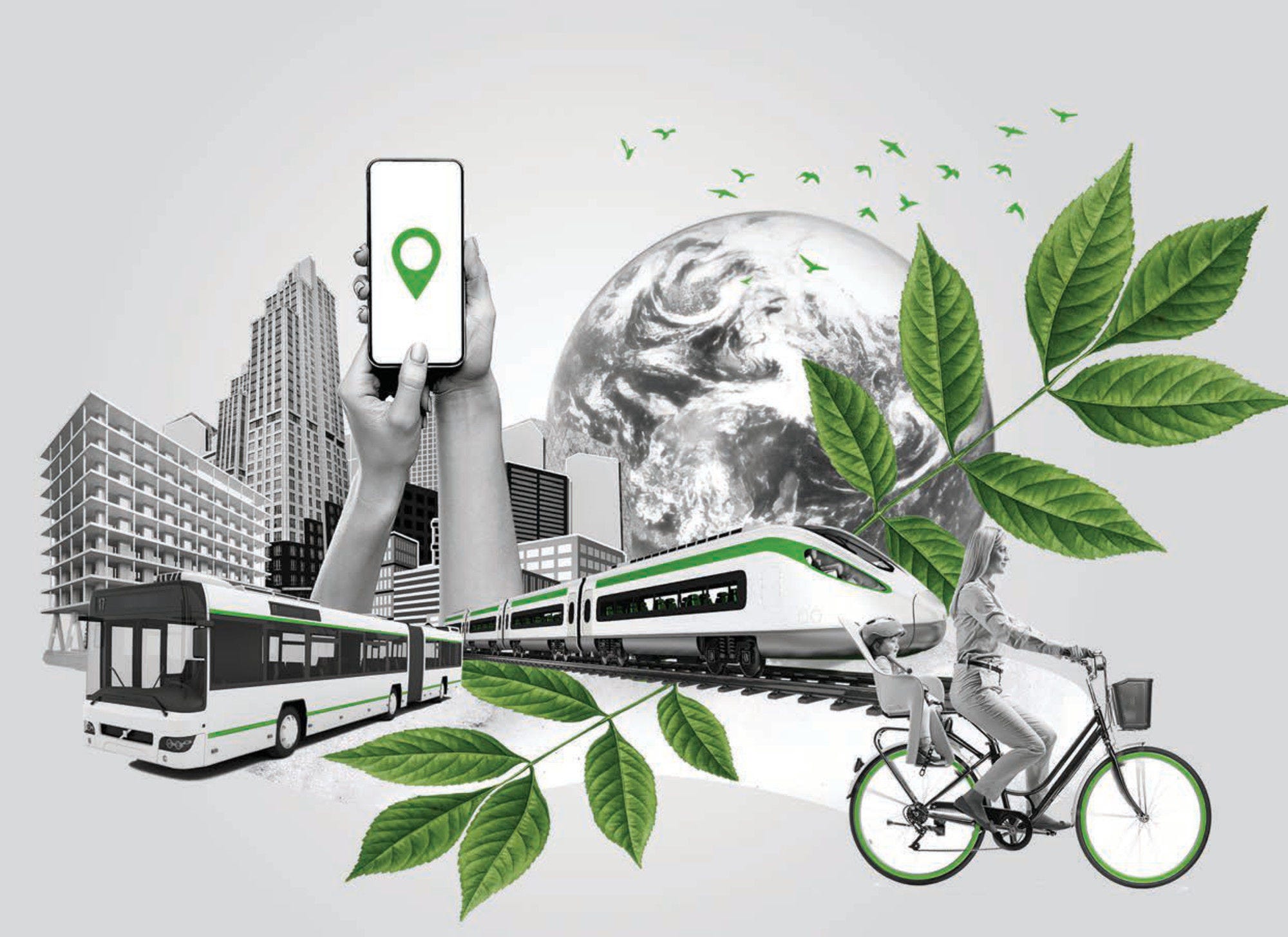Uncertainty is a defining feature of the current economic climate and this limits the ability to make robust projections. Still, it can be stated with some confidence that, globally, demand for mobility will continue to grow over the next three decades. Passenger transport will increase nearly three-fold between 2015 and 2050, from 44 trillion to 122 trillion passenger-kilometres. China and India will generate a third of passenger travel by 2050, compared with a quarter in 2015.
Private vehicles will remain the preferred mode of personal travel worldwide. Travel in cities especially will shift towards public transport and shared mobility. By 2050, both these modes are projected to account for over 50% of total passenger-kilometres. International passenger travel is increasing globally, and growth is projected to be strongest in developing countries. Aviation passenger-kilometres in India and China alone are expected to increase almost four-fold by 2050, to 21 583 billion from an estimated 5 506 billion in 2015.
Global freight demand will triple between 2015 and 2050 based on the current demand pathway. At 4.5%, air freight is expected to have the highest compound annual growth rate of all modes through 2050, although representing a small share of total freight tonne-kilometres. More than three-quarters of all freight will continue to be carried by ships in 2050, more or less unchanged from 2015. In light of current challenges to the global economy and burgeoning trade conflicts, the accuracy of projections for freight transport is particularly uncertain, as demand depends primarily on economic growth and international trade activity.
Transport CO2 emissions remain a major challenge. The extrapolation of current policy ambitions into the future shows that these will fail to mitigate increases in transport CO2 emissions in the face of strong growth in transport demand over the coming years. In a scenario where current and announced mitigation policies are implemented, worldwide transport CO2 emissions are projected to grow by 60% by 2050. This growth is driven mainly by increased demand for freight and non-urban passenger transport, both of which are projected to grow 225% by 2050. Emissions from urban passenger transport, in contrast, are projected to fall by 19%, reflecting existing strong focus of current policies on urban transport.
The implementation of more ambitious decarbonisation policies significantly alters the projected pathways for transport demand and related CO2 emissions. In such a high ambition scenario, global demand for passenger transport would be 20% lower in 2050, and related emissions 70% lower, relative to a current ambition scenario. Although global demand for freight transport would remain relatively stable in both scenarios, carbon emissions from freight transport would be 50% lower in 2050 relative to a current ambition scenario. Yet even this would fail to deliver the reductions required to achieve the Paris Agreement objective of maintaining the average global temperature increase to well-below 2 degrees Celsius above the pre-industrial era.
Transport faces a number of potential disruptions from within and outside the transport sector. The impacts of such developments, individually as well as combined, were modelled for this Transport Outlook.
Shared mobility could halve the number of vehicle-kilometres travelled in urban areas if widely adopted. This could lead to a 30% decrease in CO2 emissions from urban transport by 2050 relative to projections based on current ambitions. The widespread use of autonomous vehicles would likely increase the number of vehicle-kilometres travelled and tonnes of CO2 emissions generated in most urban regions. Simulations indicate that more teleworking could decrease global urban passenger-kilometres travelled and related CO2 emissions by around 2% in 2050 compared to the current ambition scenario.
Simulations indicate that the proliferation of long-haul low-cost aviation would increase the total number of passenger-kilometres travelled in non-urban transport and related CO2 emissions by 1% in 2050 relative to current projections. Simulation results suggest that the availability of ultra-high speed rail systems would increase total rail ridership by 1% while reducing CO2 emissions from non-urban transport by less than 1%. The use of alternative aviation fuels, in contrast, has the potential to dramatically reduce CO2 emissions from air transport, essentially by making short-haul flights carbon-free. This could result in 55% fewer emissions from domestic aviation in 2050 relative to a current ambition scenario.
Rapid growth in e-commerce could lead to modest increases in freight volumes of between 2% and 11%, depending on the transport mode. Freight-related CO2 emissions would increase by 4%. The large-scale uptake of 3D printing in manufacturing and for home use could reduce global freight volumes by 28% and related CO2 emissions by 27% compared to a current ambition scenario. This level of uptake in 3D printing is not particularly likely, however.
New trade routes would have a modest impact on global trade volumes, reducing them by 2% and related CO2 emissions by 1% to 2050 relative to current projections. The development of new international trade routes, however, could significantly change existing spatial patterns of freight transport, which would have important implications for global logistics chains and transport network infrastructure.
With respect to surface freight transport, the widespread uptake of high capacity vehicles could lead to a 3% decrease in CO2 emissions from freight transport in 2050 relative to current projections. The introduction of low- or zero-carbon fuels in long-distance road freight could lead to carbon reductions of 16% by 2050. Simulations indicate that the use of high capacity vehicles and autonomous trucks in road freight transport would not have significant impacts on overall demand for freight transport or freight-related emissions.
In full disruption scenarios, in which several disruptive developments coincide, projected transport demand and the related CO2 emissions are lower in 2050 relative to the current ambition scenario in all sectors. The strongest emissions reductions can be achieved with policies in place to guide the disruptions. In urban passenger transport for example, the widespread adoption of shared and autonomous vehicles could cut CO2 emissions by 73% and congestion by 24% in 2050 relative to current projections if managed by appropriate policies.
Similarly, technological disruptions in non-urban passenger transport have greater carbon mitigation potential when managed through complementary policy measures, rather than when they just occur. In the first case, they could reduce emissions by 76% in 2050, in the second by 63%. Outcomes are similar in freight transport, where policy measures to increase logistical efficiency augment the emissions reductions achieved by technological disruptions. Left to themselves, technological disruptions lower freight-related CO2 emissions by 44% in 2050 compared to current projections. With the concurrent implementation of logistical policy measures, emissions reductions reach 60%.
Taken together, the simulations show that transport policies heavily determine the impact that disruptions will have on the demand for transport demand and on its carbon footprint. The simultaneous implementation of policies designed to mitigate the negative impacts of disruptions enhances emissions reductions in all sectors of transport. Thus, policy makers have a crucial role to play in determining the nature and extent of change even where developments stand to disrupt transport systems considerably.










